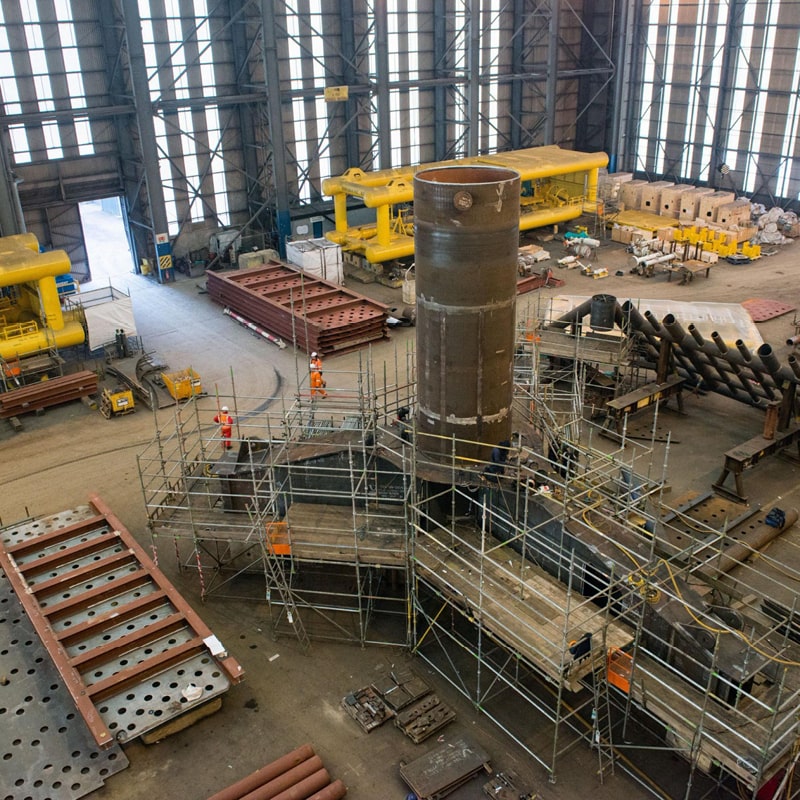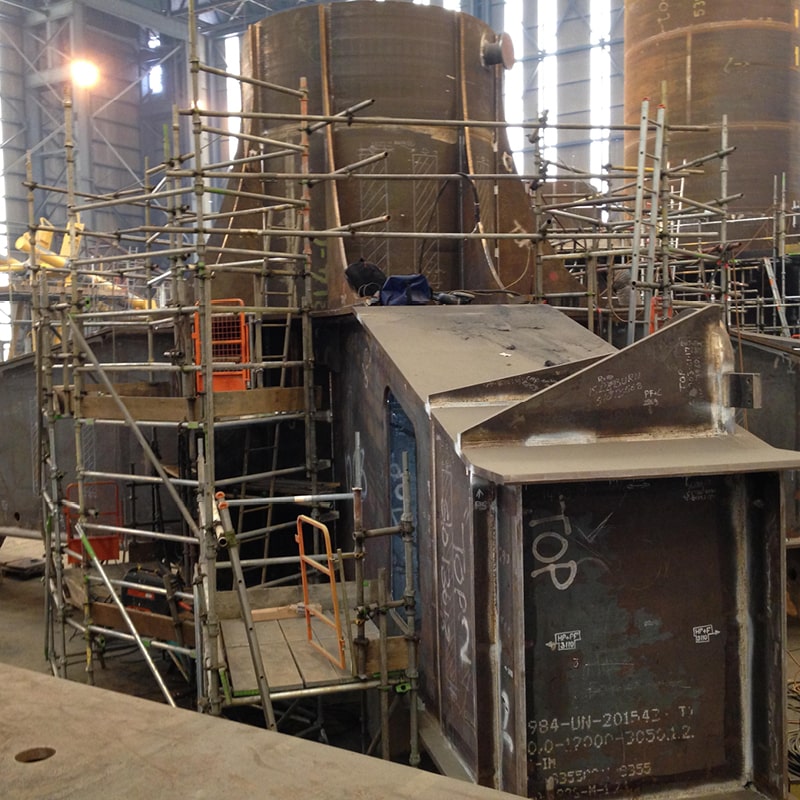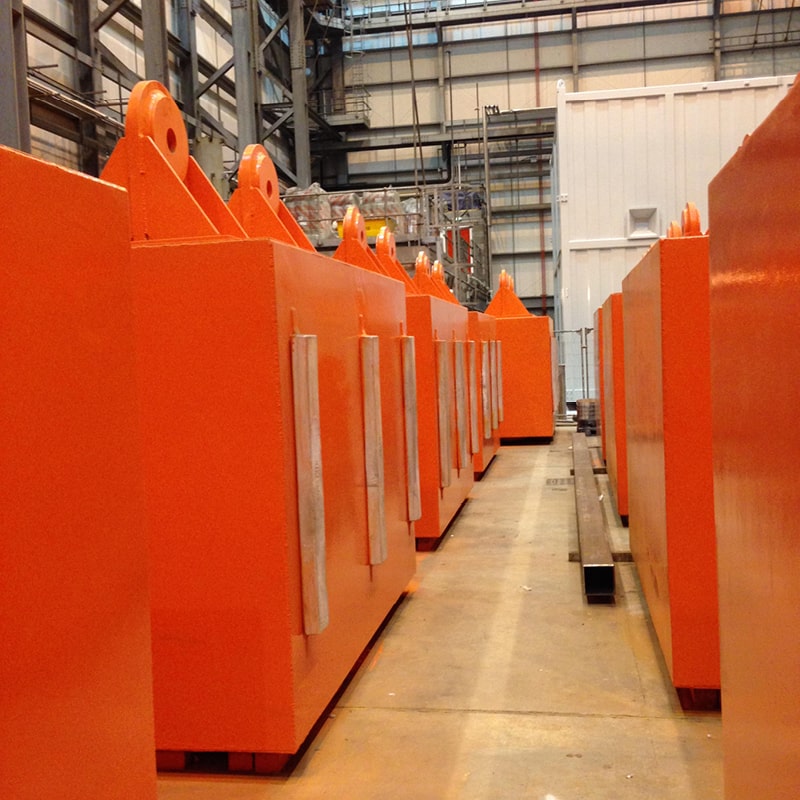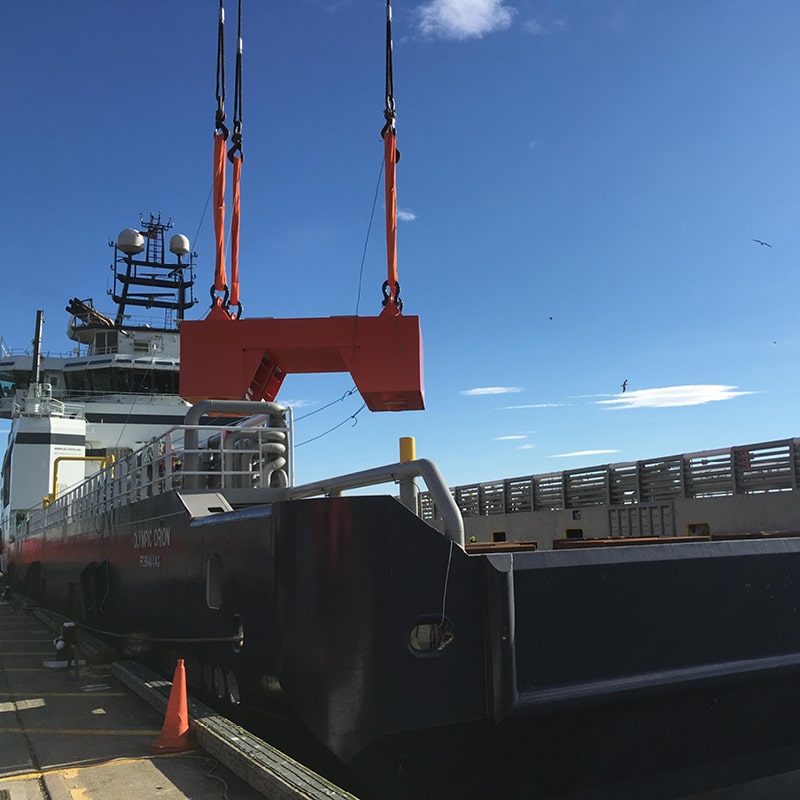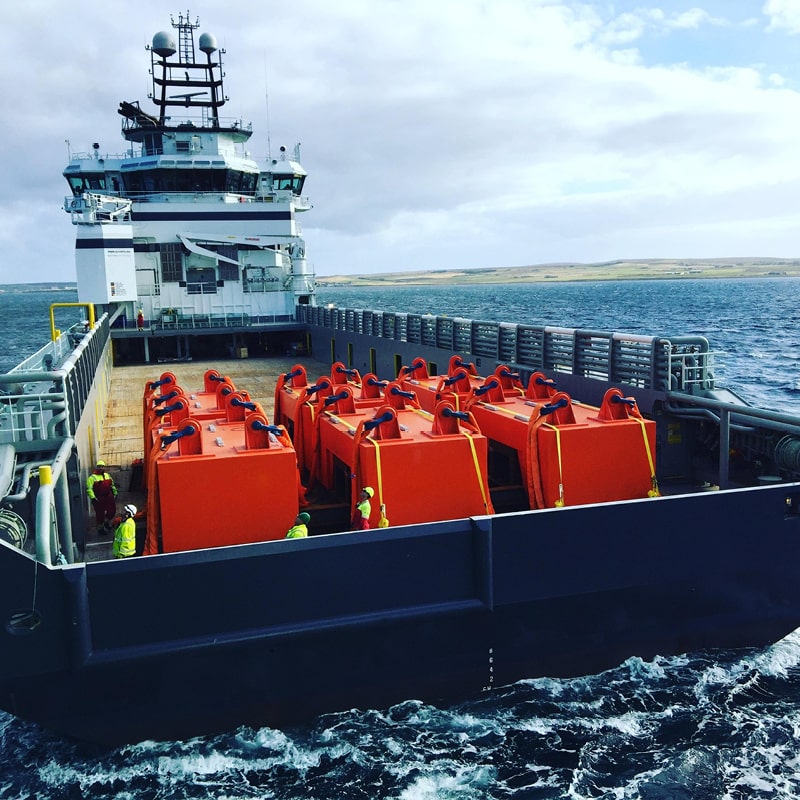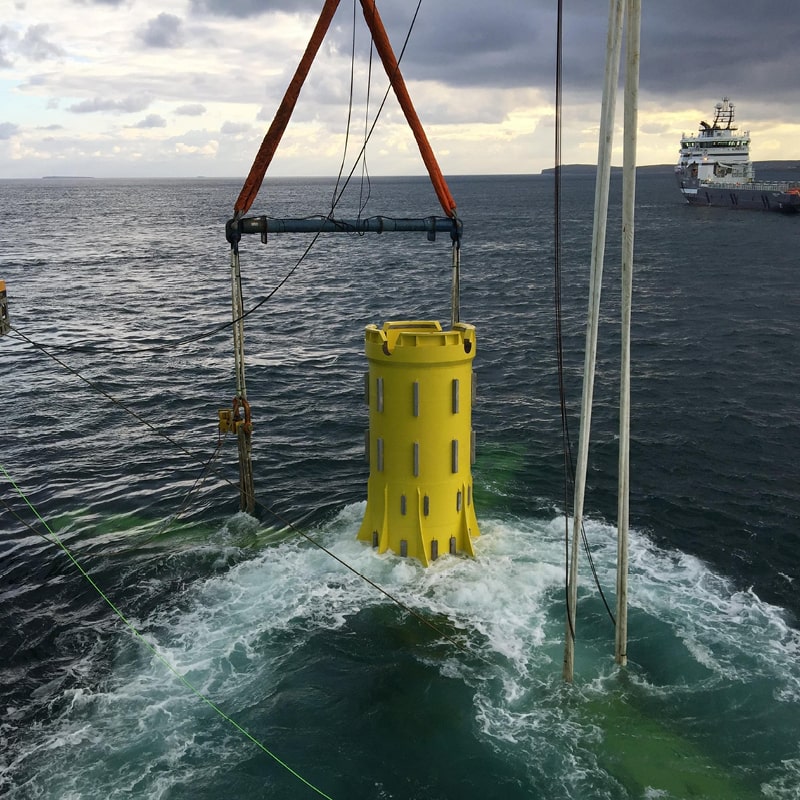The MeyGen Phase 1A Project is the first stage of the 398MW MeyGen tidal turbine farm, being the world’s first utility scale tidal turbine array. Phase 1A comprises four 1.5MW turbines using turbines from two different suppliers, installed south of the island of Stroma in the Pentland Firth (Scotland). The four turbines which comprise MeyGen Phase 1A became operational in early 2017, and the project was granted full accreditation by Ofgem under the Renewables Obligations (Scotland) Order in March 2017.
The site was chosen for its significant tidal stream: as the tide flows from the Atlantic Ocean into the North Sea and back, the flow is concentrated to produce powerful tidal races. Because of the irregular seabed the flow is highly turbulent, containing strong eddies and vortices at both small and large scales. The chosen concept was a gravity base Turbine Support Structure (TSS) comprising a fabricated steel tripod with two 200t ballast blocks per leg. The 158 ton structure is 25m x 20m on plan with the cylindrical pylon supporting the turbine 15m above seabed.
The project is the first of its kind in the world, and accordingly the challenges overcome in delivery were significant. The extreme and unique site conditions posed numerous and first-of-their-kind challenges requiring a first principles approach to engineering and design; these were successfully overcome by the RBG design team working in close collaboration with the client and the wider design team to develop the most efficient, economic and durable solution. Successful delivery of the substructure has enabled the success of the overall project.
Lessons Learnt
The typical solution for a fixed marine structure is a tubular jacket, but in such shallow water (relative to turbine diameter) this would have interfered with the turbine operation and attracted significant drag. RBG developed an alternative low-profile structural form to enable development of the shallow water MeyGen site. This low-profile form also minimises frontal-area exposed to environmental drag, thereby reducing the size of ballast required, and enables the turbine to be efficiently placed in a high tidal energy region.
Articulated feet (employing spherical bearings) were developed. Without this innovation, twisting of the legs due to seabed irregularity would have governed the leg design for fatigue purposes requiring a significantly more costly structure.
Multiple iterations of the fatigue design were undertaken to refine and optimise the weld selection. Double-sided full penetration welds are typically the best choice in terms of fatigue performance. However, since much of the fabrication cost lays in welding, careful choice of weld details to enable greater use of automated welding procedures was a key driver.
Owing to the presence of frequent fast moving currents, the Cathodic Protection (CP) design was based on guidance for moving vessels rather than for typical fixed offshore structures. The appropriate CP specification together with a robust paint system were necessary to give confidence of the required 25 year maintenance-free life.
The delivery of this industry leading, world class project has been made possible by collaboration between engineers and scientists at all levels to bring this new technology from the laboratory to the world’s oceans. RBG have worked closely with Lockheed Martin, Rolls Royce, Andritz Hydro and other world leading engineering companies to jointly shape an integrated efficient solution while overcoming considerable challenges in Structural, Mechanical, Electrical and Hydrodynamic design, installation and commissioning.
RBG is represented on the committee drafting the IEC standard for marine energy devices, and lessons learnt from the MeyGen project have supported the development of this standard. We continue to support development of the marine energy industry generally through industry associations and conference presentations sharing lessons learnt.
Sustainability
The tidal energy industry is at the forefront of sustainably harvesting energy from the environment: proven, effective, foundation design is key for supporting the growth of this industry and enabling the promise of a transformation to a more sustainable energy mix in the future to be achieved. The scheme is environmentally responsible in other ways; being entirely below the sea surface, the visual sensitivity is minimised. The gravity base concept negated any lasting effect on the site as the structures can simply be lifted off the seabed once their operational life is over allowing embodied materials to be recycled.
The support structure and ballast blocks were fabricated close to site to reduce transportation impact. The design of ballast blocks and tripods was selected to facilitate transportation from the fabrication facilities to the port, with only final assembly being undertaken at the quayside.
